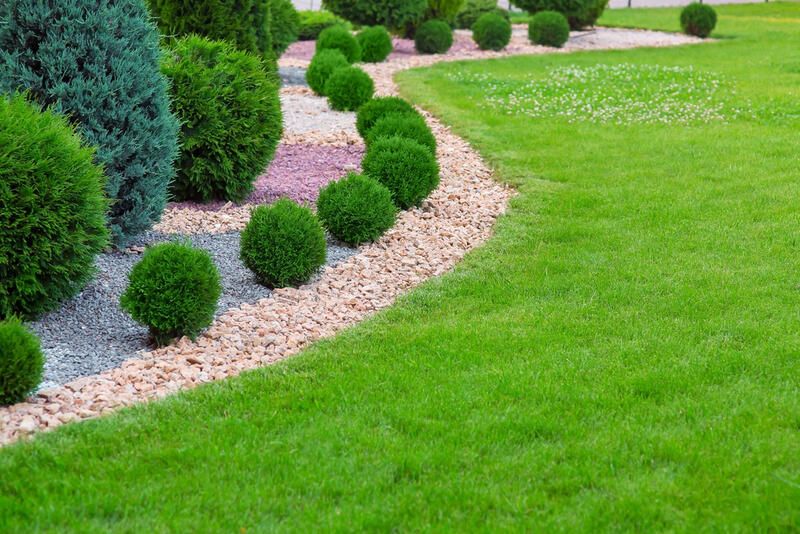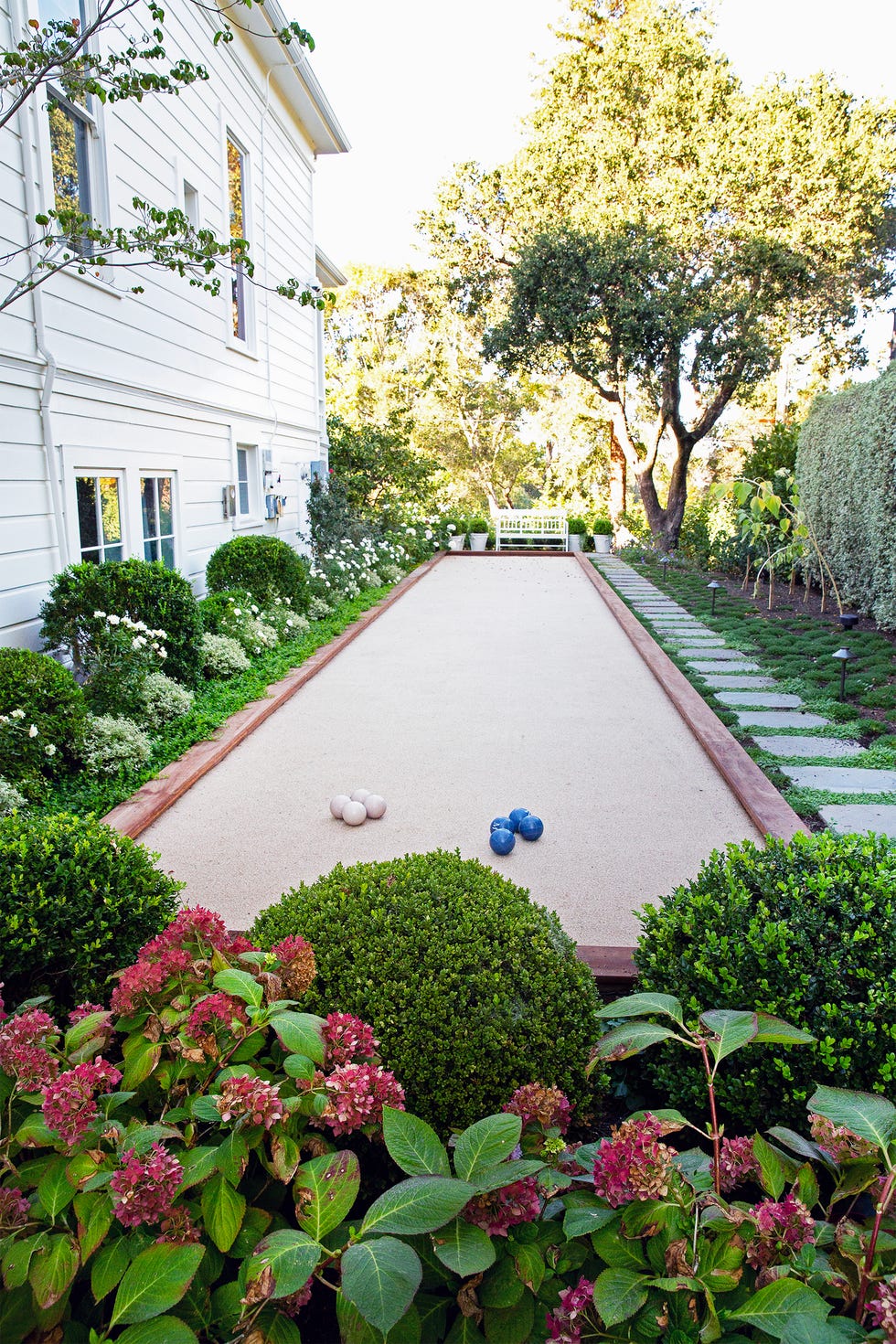Efficient Lawn Cleanup Jacksonville: Preserve a Tidy and Healthy And Balanced Lawn
Efficient Lawn Cleanup Jacksonville: Preserve a Tidy and Healthy And Balanced Lawn
Blog Article
Elevate Your Home's Aesthetic With Sustainable Landscaping Styles and Eco-Friendly Practices

Advantages of Lasting Landscape Design
Applying sustainable landscape design techniques not only preserves natural sources but also advertises biodiversity and improves total environmental health and wellness. One significant benefit is the reduction of water consumption via the use of drought-resistant plants, rainfall yards, and efficient watering systems.
Additionally, sustainable landscape design can improve dirt health and wellness by reducing making use of chemical plant foods and pesticides, thereby developing a healthier setting for plant growth and valuable soil microorganisms. This, consequently, boosts the total durability of the landscape to withstand ecological stressors and environment change influences - landscaping companies Jacksonville. Additionally, sustainable landscape design techniques can attract varied wild animals, including pollinators like butterflies and , fostering an extra well balanced and dynamic ecological community within the building
Incorporating Native Plants
To develop upon the benefits of sustainable landscaping, a tactical focus on including indigenous plants can better boost eco-friendly strength and advertise biodiversity within the landscape. Indigenous plants are varieties that normally take place in a certain location and have developed to grow in the neighborhood environment, dirt conditions, and ecological community. By including native plants in landscaping designs, residential or commercial property owners can reduce water use, decrease the demand for chemical pesticides and plant foods, and sustain the regional wildlife population.
Incorporating native plants additionally aids in protecting the one-of-a-kind personality and identification of a region's flora. These plants commonly need less maintenance once developed, making them a cost-efficient and lasting landscaping service in the future. In addition, native plants can draw in native pollinators like butterflies and , contributing to the overall wellness of the community.
When choosing indigenous plants for landscape design jobs, it is necessary to select types that are well-suited to the specific ecological problems of the site. Consulting with local baby rooms or herb yards can give useful guidance on picking the best indigenous plants for a specific location. By incorporating native plants into landscape design designs, homeowner can develop attractive, sustainable outside rooms that benefit both the area and the atmosphere.

Water Conservation Techniques
Effective watering techniques play an important function in sustainable landscape design methods, making sure ideal water conservation initiatives in exterior areas. Executing techniques such as drip watering, rainwater harvesting, and original site smart irrigation systems can substantially minimize water wastage while keeping a healthy and balanced landscape. Leak irrigation delivers water directly to the roots of plants, reducing evaporation and drainage. Rain harvesting entails accumulating rain from roofings and storing it for later usage in watering, decreasing the dependence on metropolitan water sources. Smart watering systems make use of weather condition data and soil dampness levels to readjust sprinkling schedules, stopping overwatering and advertising water effectiveness.
In enhancement to innovative watering methods, xeriscaping is one more water-saving landscape design technique that concentrates on utilizing drought-resistant plants, compost, and reliable check out here irrigation to create a low-water landscape style - lawn cleanup Jacksonville. By selecting indigenous plants that are well-suited to the regional environment and soil conditions, home proprietors can reduce the requirement for extreme watering, inevitably preserving water and promoting a sustainable outside setting
Eco-Friendly Hardscaping Ideas
Enhancing outdoor rooms with environment-friendly hardscaping attributes can add dramatically to sustainable landscaping methods. When considering hardscaping aspects, choose products like reclaimed wood, recycled concrete, or all-natural stone to reduce ecological impact. These materials not only add a special aesthetic interest your exterior room yet also lower the need for new resources extraction.
Applying absorptive paving choices such as gravel or permeable concrete can aid lower water runoff and promote groundwater recharge. These alternatives permit rain to leak into the ground, stopping disintegration and minimizing the concern on stormwater systems.
Incorporating indigenous plants into hardscaping layouts can better improve eco-friendliness by supporting regional wildlife and lowering the demand for excessive watering or chemical therapies. By integrating vertical gardens or green wall surfaces, you can introduce extra plants right into urban setups, improving air top quality and biodiversity.
Integrating energy-efficient lights, such as solar-powered LEDs, into hardscaping designs can lower power usage and reduced your property's carbon footprint. Focusing on environment-friendly hardscaping ideas not just improves the beauty of your outside room however additionally demonstrates a dedication to environmental stewardship.
Maintenance Tips for Lasting Landscapes
.jpg)
Frequently check my reference trim plants to promote healthy growth and avoid overgrowth that can lead to pest conditions or problems. Use natural fertilizers to nourish the soil and plants without dangerous chemicals that can seep right into the setting.
Verdict
In conclusion, sustainable landscape design practices provide many advantages for property owners, from improving the aesthetic charm of the environments to advertising ecological conservation. By incorporating native plants, executing water conservation techniques, and using eco-friendly hardscaping concepts, homeowner can develop beautiful landscapes that are also environmentally responsible. With proper maintenance, lasting landscapes can add and thrive to a much healthier ecological community for both human beings and wild animals.
Additionally, sustainable landscaping can enhance soil health by minimizing the usage of chemical fertilizers and chemicals, therefore producing a healthier atmosphere for plant development and helpful soil microorganisms.To construct upon the advantages of sustainable landscaping, a tactical focus on incorporating native plants can better boost eco-friendly durability and promote biodiversity within the landscape. By including indigenous plants in landscaping designs, property proprietors can decrease water use, decrease the requirement for chemical pesticides and fertilizers, and sustain the regional wildlife populace.
These plants frequently need less upkeep when established, making them a cost-efficient and sustainable landscape design service in the lengthy run. By integrating native plants right into landscaping styles, building owners can create gorgeous, lasting outdoor areas that profit both the environment and the neighborhood.
Report this page